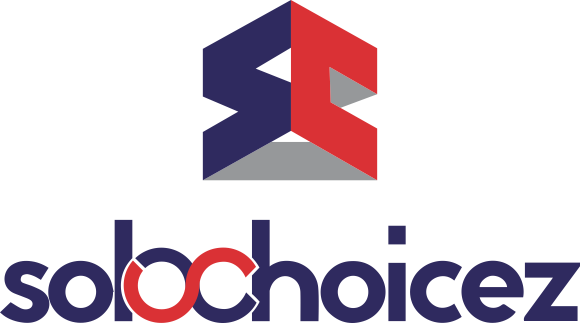In the rapidly advancing world of technology, development—whether it’s software, web, or mobile app development—plays a crucial role in shaping the future. Understanding the development process is essential for both budding developers and experienced professionals looking to refine their skills. This blog explores the comprehensive journey of development, from initial concept to deployment, and provides insights into best practices and methodologies.
1. The Development Lifecycle
1.1 Conceptualization and Planning
The development lifecycle begins with the conceptualization and planning phase. This stage involves:
- Idea Generation: Identifying the problem or opportunity that the project will address. This could involve brainstorming sessions, market research, and stakeholder interviews.
- Requirement Analysis: Gathering and analyzing requirements from stakeholders to define what the project should achieve. This includes functional and non-functional requirements.
- Project Scope: Defining the project’s scope, including objectives, deliverables, timelines, and resources needed.
1.2 Design
Once the planning is complete, the design phase involves creating detailed specifications and blueprints:
- Architecture Design: Structuring the overall system, including components, modules, and their interactions. This ensures a scalable and maintainable system.
- UI/UX Design: Designing user interfaces and experiences that are intuitive and engaging. This includes wireframes, mockups, and prototypes.
- Technical Specifications: Documenting technical details such as database schemas, APIs, and third-party services.
1.3 Development
The development phase is where the actual coding happens. It includes:
- Environment Setup: Configuring development environments, including tools, libraries, and frameworks.
- Coding: Writing the source code based on the design specifications. This involves frontend and backend development, depending on the project’s requirements.
- Integration: Combining various components and services to ensure they work together seamlessly.
1.4 Testing
Testing is critical to ensure the quality and functionality of the developed product:
- Unit Testing: Testing individual components or functions to ensure they work correctly in isolation.
- Integration Testing: Ensuring that different components of the system interact properly.
- System Testing: Testing the complete system to verify that it meets the specified requirements.
- User Acceptance Testing (UAT): Validating the product with actual users to ensure it meets their needs and expectations.
1.5 Deployment
Deployment involves delivering the finished product to users:
- Staging Environment: Testing the product in an environment that closely resembles the production environment to catch any last-minute issues.
- Release Management: Planning and executing the deployment process, including versioning, rollouts, and rollback strategies.
- Production Deployment: Launching the product to the live environment, making it available to users.
1.6 Maintenance and Support
After deployment, ongoing maintenance and support are crucial:
- Monitoring: Continuously monitoring the product for performance issues, bugs, and user feedback.
- Updates and Enhancements: Implementing updates, bug fixes, and new features based on user feedback and changing requirements.
- Support: Providing user support to address any issues or questions that arise.
2. Development Methodologies
Different methodologies guide the development process, each with its own approach and advantages:
2.1 Waterfall
The Waterfall methodology is a linear and sequential approach where each phase must be completed before the next one begins. It’s straightforward but can be inflexible to changes.
2.2 Agile
Agile development emphasizes iterative progress, flexibility, and collaboration. Key principles include:
- Iterative Development: Breaking the project into smaller iterations or sprints.
- Continuous Feedback: Incorporating regular feedback from stakeholders and users.
- Collaboration: Encouraging close collaboration between development teams and stakeholders.
2.3 Scrum
Scrum is a specific Agile framework that organizes work into time-boxed sprints, usually lasting two to four weeks. It involves roles like Scrum Master and Product Owner, and practices such as daily stand-ups and sprint reviews.
2.4 DevOps
DevOps integrates development and operations to improve collaboration, automate processes, and accelerate delivery. Key practices include:
- Continuous Integration (CI): Regularly integrating code changes into a shared repository.
- Continuous Deployment (CD): Automatically deploying code changes to production environments.
- Infrastructure as Code (IaC): Managing infrastructure using code and automation.
3. Best Practices in Development
3.1 Code Quality
Maintaining high code quality is essential for a successful project:
- Code Reviews: Regularly reviewing code to identify issues and ensure adherence to coding standards.
- Automated Testing: Implementing automated tests to catch errors early and improve code reliability.
- Refactoring: Continuously improving and optimizing code to enhance performance and readability.
3.2 Documentation
Good documentation supports development and future maintenance:
- Technical Documentation: Documenting code, architecture, and APIs for future reference.
- User Documentation: Providing user guides, manuals, and FAQs to help users understand and utilize the product.
3.3 Version Control
Using version control systems like Git helps manage changes and collaborate effectively:
- Branching: Creating branches for different features or fixes to isolate changes.
- Commit Messages: Writing clear and descriptive commit messages to track changes.
3.4 Security
Ensuring the security of the product is crucial:
- Code Security: Implementing security best practices in coding, such as input validation and secure authentication.
- Vulnerability Scanning: Regularly scanning the product for vulnerabilities and addressing them promptly.
4. Trends and Innovations in Development
4.1 Artificial Intelligence and Machine Learning
AI and ML are increasingly being integrated into development to enhance functionality, automate tasks, and provide personalized experiences.
4.2 Cloud Computing
Cloud computing offers scalable infrastructure and services, allowing for flexible and cost-effective development and deployment.
4.3 Microservices Architecture
Microservices break down applications into smaller, independent services, improving scalability and maintainability.
4.4 Low-Code/No-Code Platforms
These platforms enable rapid application development with minimal coding, making it easier for non-developers to create functional applications.
Conclusion
The development process is a dynamic and multifaceted journey that requires careful planning, execution, and continuous improvement. From conceptualization and design to deployment and maintenance, each phase plays a crucial role in creating successful and high-quality products. By understanding the development lifecycle, methodologies, best practices, and emerging trends, you can navigate the complexities of development and contribute to creating innovative solutions that meet users’ needs and drive technological progress.



